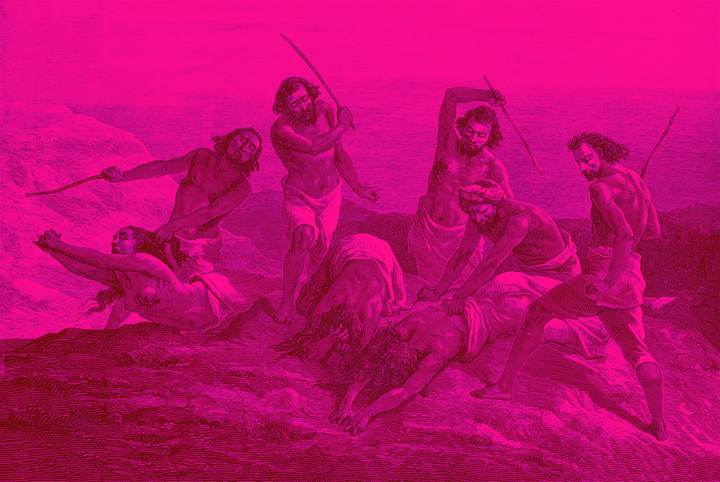In Namibia, nostalgia for corporal punishment
– Carlo Massimo
Traditional Namibian law stipulated floggings with a palm-branch whip. To many Namibians, it still makes more sense than prison.
Judicial corporal punishment, a court order that the guilty party be flogged or beaten, is a distant memory in the United States. It last happened in 1952, when a Delaware man was sentenced to twenty lashes. Even then it was a rarity. To liberal, Western eyes, corporal punishment seems barbaric and medieval. And while French philosopher Michel Foucault found the whipping post preferable to the prison cell, most Westerners would disagree.
In Namibia, though, popular opinion seems to concur with Foucault’s point, though not necessarily with his reasons. Traditional jurisprudence in Namibia has long recommended a beating with the epokolo, a whip made from palm branches, for everything from murder and rape to insolence toward elders. The epokolo has been illegal since 1975, but a new report in the Journal of African History finds that as recently as 2009, many Namibians remember the epokolo days with a strange nostalgia. “The epokolo was good,” one Namibian told the author.
The reason behind this bizarre fondness for flogging is twofold. Part of it lies in Namibia’s colonial history. A German colony before World War I, the Allied Powers handed Namibia to the apartheid government of South Africa. (The South African police, incidentally, used a whip of their own, the infamous hippo-hide sjambok, now a symbol of the violence and degradation that defined the nation’s colonial history.) But Namibia is a vast country, and in some parts, particularly the remote Ovamboland, the South African courts were stretched too thin to attend to every case brought to trial. Consequently, the colonial courts farmed their work out. Low-level court cases fell to the discretion of local headmen and their village courts, whose favorite penalty was the epokolo.
The village courts had no say in Namibia’s colonial government, which was ruled from South Africa and exclusively white. Nevertheless, these courts were one of very few places where black voices mattered, where native Namibians had some say in the running of their own community. The epokolo came to embody the dignity of a community that regulated itself, in spite of outside colonial rule. Prison, an institution imported from Europe via South Africa, does not have the same resonance. Prison is foreign. The epokolo is native.
The other reason for the epokolo’s popularity over prison is more material, and more ironic. In a country marked by a stagnant economy, huge income disparities, and regular food shortages, the regular meals and rent-free beds of prison are less a punishment than a kind of reward. “Prison is useless,” one man told Jones, “because people will just go and eat nice food. They are even eating eggs and they have shelter and everything.”
Epokolo nostalgia may seem barbarous, but in the end it’s a longing for a kind of normality: a country in charge of itself, unravished by famine, spared the depredations of apartheid and colonial rule. It’s an ironic sort of longing, certainly, and it raises uncomfortable questions about the role of physical pain in judicial punishment. The Islamic State has made headlines for its punitive beatings and mutilations, but American allies across Asia, from Qatar to Singapore, flog and otherwise inflict pain on their own citizens who break the law. Beatings and “rough rides” in the backs of vans are still routine in some police precincts throughout the United States. The epokolo, by comparison, seems tame.
* * *
The Source: David Crawford Jones, “Wielding the epokolo: Corporal punishment and traditional authority in colonial Ovamboland,” Journal of African History 56.2 (2015): 301-320
Photo courtesy of Shutterstock
